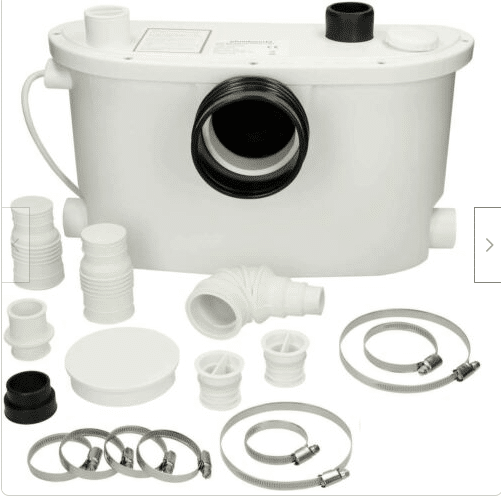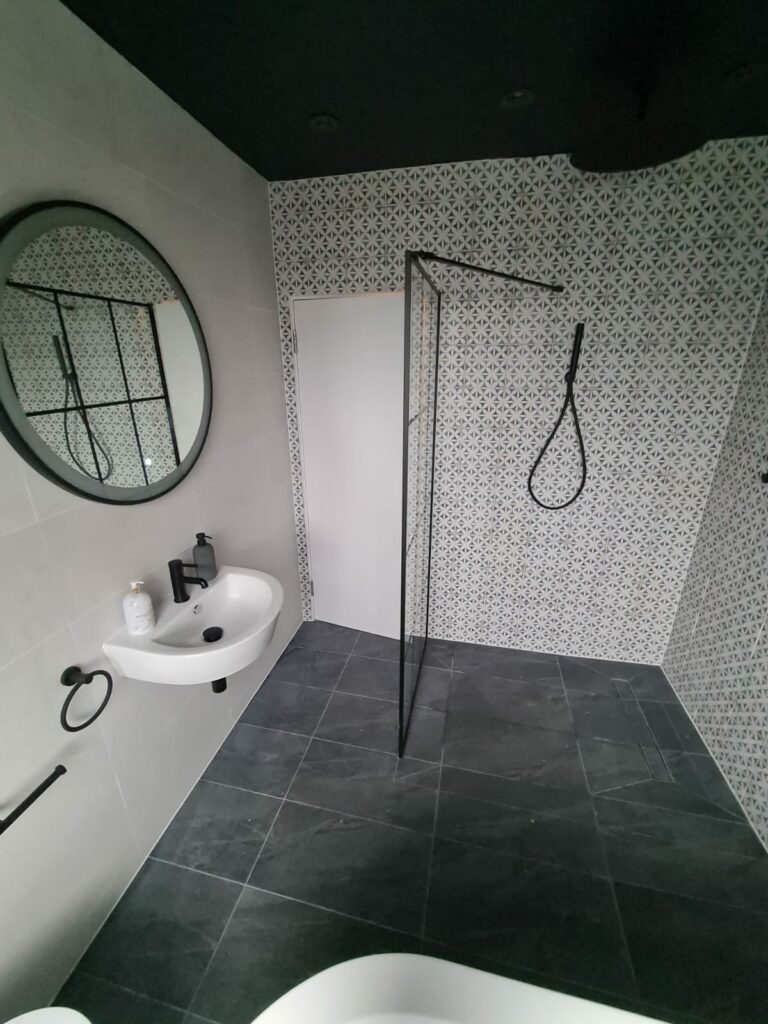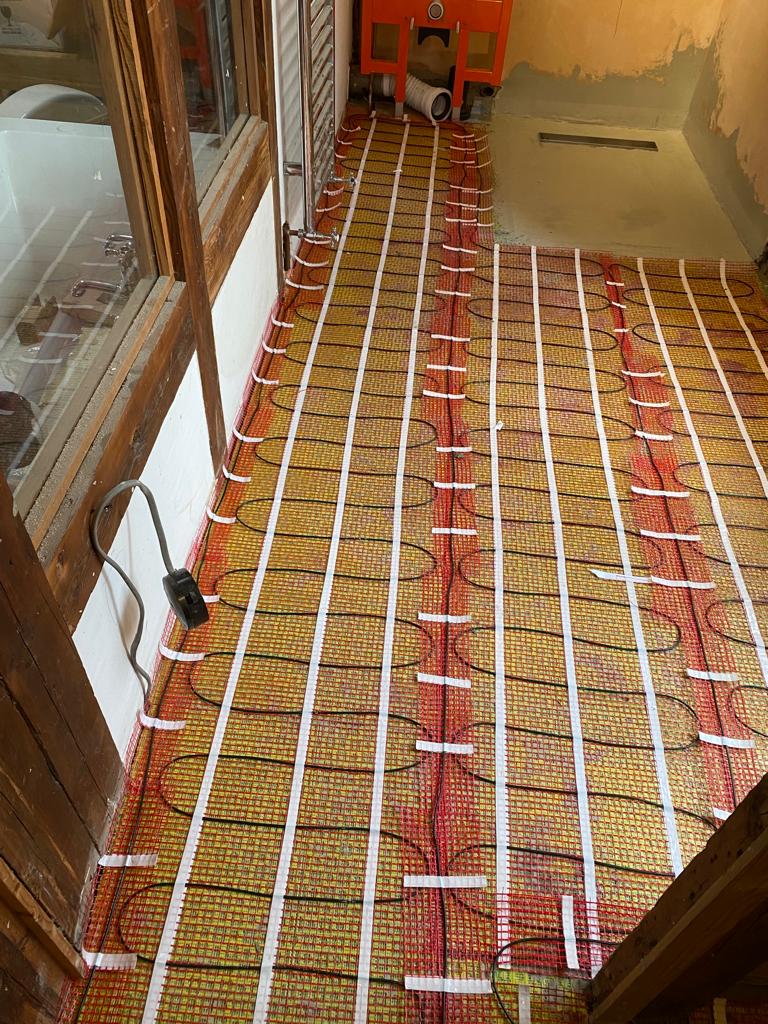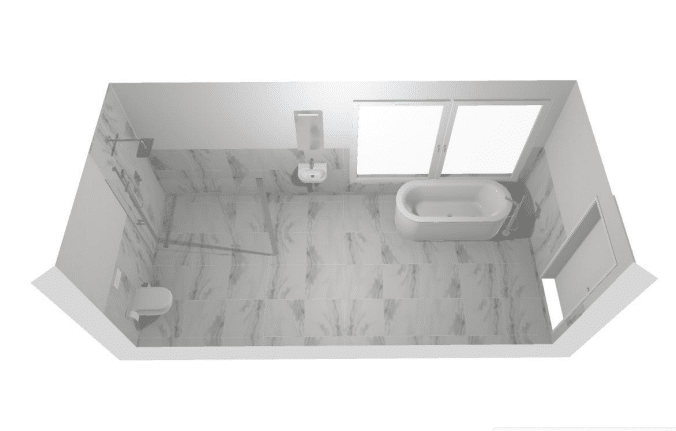Upgrading your bathroom and pondering over whether to install a walk-in shower or convert it into a wet room? Walk-in showers offer practicality with a touch of style, whereas wet rooms bring about an open-plan luxury.
This article will dive into the benefits and drawbacks of each, guiding you towards making the best choice for your home’s comfort and value. Keep reading to uncover which option suits your bathroom bliss.
Key Takeaways
- Walk-in showers are easy to install and perfect for quick bathroom upgrades. They have a step-free entrance but use a conventional shower tray, which helps keep water contained.
- Wet rooms offer an open – plan feel that can make your bathroom look bigger and more luxurious. They require a complete waterproofing of the entire room, which might increase installation costs.
- Unlike walk-in showers with screens for privacy, wet rooms don’t have barriers, offering greater accessibility and an ultra-modern look.
- Both options can be enhanced with slip – resistant flooring for safety purposes, making them suitable choices for those with mobility challenges.
- Choosing between a walk – in shower and a wet room comes down to personal preference, budget considerations, desired design aesthetics, and practical requirements regarding space usage.
What is a Walk-In Shower?
A walk-in shower is a larger, open-plan shower area that does not require a step or door to enter. It typically features a tiled floor and drainage system, offering easy accessibility and modern design options for your bathroom.
Pros and Cons
Walk-in showers offer a practical and easy-to-install option for bathroom renovations. They use a conventional shower tray that helps contain water effectively, which means less maintenance when it comes to keeping the bathroom floor dry.
The added shower screen in walk-in showers ensures privacy while stopping water from splashing out into other areas of the bathroom. However, they might not provide the same spacious feel as wet rooms do.
In contrast, wet rooms create an open plan design that can make your bathroom appear more expansive and luxurious. Their fully waterproofed environment allows for greater design flexibility and accessibility, particularly suited for individuals with mobility issues.
With slip-resistant flooring options available, safety features are easily integrated into their design. One downside to consider is that installation costs may be higher due to the extensive work required in setting up drainage systems and waterproofing throughout the entire room space.
Leading on from this discussion about walk-in showers and wet rooms, let’s explore what exactly defines a wet room in more detail.
What is a Wet Room?
Wet rooms are open-plan shower spaces that do not have a shower tray or enclosure. Unlike walk-in showers, wet rooms have no barrier between the shower area and the rest of the bathroom.
They provide a spacious and contemporary feel to any bathroom, making them ideal for those seeking a modern and luxurious design. With slip-resistant flooring options available, wet rooms can also be equipped with safety features, making them suitable for individuals with mobility issues.
The installation process for wet rooms is more extensive compared to walk-in showers, requiring careful considerations for waterproofing and drainage. Despite this, wet rooms offer a unique aesthetic and can create an illusion of added space in smaller bathrooms.
While they may require more maintenance to keep clean and dry, their open design provides homeowners with flexibility in customising their bathroom layout according to their preferences.
Conclusion
In conclusion, walk-in showers and wet rooms offer distinct advantages and design features. Walk-in showers are a practical choice for most homeowners due to their enclosed design providing more privacy.
On the other hand, wet rooms provide a spacious and open feel with an entirely open-plan layout. The decision between the two depends on individual preferences, spatial requirements, and accessibility needs.
Both options offer unique benefits tailored to different lifestyles and tastes in bathroom design.
FAQs
1. What makes a walk-in shower different from a wet room?
A walk-in shower is an open-plan shower with defined dimensions and usually has a doorless entry, while a wet room is completely waterproofed and the entire bathroom floor is on the same level, often including the shower area.
2. How does the tiling differ in walk-in showers versus wet rooms?
In walk-in showers, tiling focuses around the enclosure and sometimes includes splashbacks. In contrast, a wet room requires extensive tiling throughout to ensure proper waterproofing of all surfaces.
3. Is there any difference in installation between a walk-in shower and a wet room?
Yes, installing a walk-in shower typically involves setting up an open but contained shower space within your bathroom design, whereas fitting out a wet room asks for more comprehensive work to make sure all bathroom flooring can handle water exposure.
4. Can I have underfloor heating in both types of bathrooms?
Certainly! Both walk-in showers and wet rooms can include underfloor heating systems seamlessly into their designs for added comfort during use.
5. When considering remodeling my bathroom should I go for either type based on cost or style?
Your choice between remodeling your space into either option should reflect your personal style preference as well as budget considerations since costs may vary due to differences in necessary materials like enclosures or complete floor sealing for each design.









